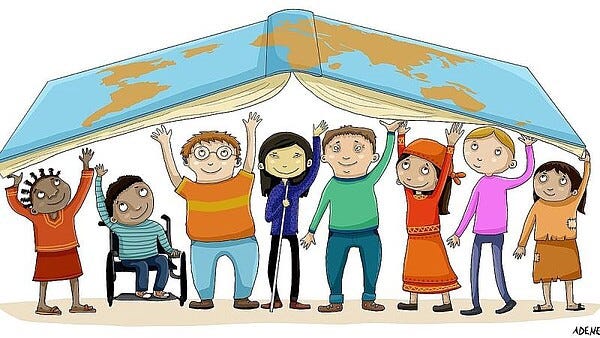Education and Access to Opportunity In America
Education has long been regarded as the cornerstone of opportunity in America, promising the chance for individuals to achieve their dreams and contribute meaningfully to society. Yet, despite this ideal, the reality often falls short, with disparities in access to quality education persisting across socioeconomic lines. This article delves into the complex relationship between education and opportunity in America, exploring the challenges faced and proposing solutions to bridge the gap for a more equitable future.
Table of Contents
The Promise of Education.
Education is more than just acquiring knowledge; it is the key that unlocks doors to opportunity. It empowers individuals to think critically, communicate effectively, and adapt to an ever-changing world. From early childhood development to higher education and beyond, each stage of the educational journey plays a vital role in shaping the trajectory of a person’s life.
However, the promise of education is not equally accessible to all. In America, where the principle of equal opportunity is enshrined in national ethos, disparities in access to quality education persist along racial, economic, and geographic lines. These inequities not only perpetuate cycles of poverty and inequality but also hinder the nation’s overall economic and social progress.
Also Read: What are the Natural Treasures of America?
Challenges in Access to Quality Education.
One of the most significant challenges to educational access in America is the persistent achievement gap. Students from low-income families, minority backgrounds, and underserved communities often face barriers such as inadequate funding, substandard facilities, and limited access to experienced teachers. As a result, they are disproportionately affected by lower academic performance and reduced opportunities for advancement.

Moreover, the digital divide exacerbates existing disparities, particularly in the wake of the COVID-19 pandemic, which forced many schools to transition to remote learning. Students without reliable internet access or necessary technology found themselves further marginalized, highlighting the urgent need for equitable access to digital resources.
Furthermore, systemic issues such as school segregation, unequal distribution of resources, and inequitable funding formulas perpetuate disparities in educational outcomes. Despite decades of efforts to address these issues, progress has been slow, and the gap continues to widen for many marginalized communities.
Solutions for Bridging the Gap.
Addressing the inequities in education requires a multifaceted approach that tackles both systemic barriers and individual challenges. Here are some key strategies for bridging the gap:
- Equitable Funding: Reforming school funding formulas to ensure that resources are distributed fairly, with additional support directed towards schools serving low-income communities.
- Early Childhood Education: Investing in high-quality early childhood education programs to provide all children with a strong foundation for future learning and development.
- Teacher Support and Training: Providing ongoing professional development and support for teachers, particularly those working in high-needs schools, to ensure that all students have access to effective instruction.
- Technology Access: Closing the digital divide by expanding broadband infrastructure and providing devices and internet access to students from underserved communities.
- Community Engagement: Engaging parents, caregivers, and community stakeholders in the educational process to create a supportive ecosystem that nurtures student success.
- Culturally Responsive Curriculum: Developing curriculum and instructional materials that reflect the diversity of students’ backgrounds and experiences, promoting inclusivity and equity in the classroom.
- College Affordability: Making higher education more accessible and affordable through increased financial aid, scholarships, and support services for low-income and first-generation college students.
By implementing these strategies and prioritizing equity in education, America can move closer to fulfilling its promise of equal opportunity for all.
Conclusion.
Education is the great equalizer, offering individuals the chance to transcend their circumstances and achieve their full potential. Yet, for too many Americans, access to quality education remains elusive, perpetuating cycles of inequality and limiting upward mobility. By addressing systemic barriers and investing in solutions that prioritize equity, we can bridge the gap and create a future where every individual has the opportunity to succeed. In doing so, we not only fulfill the promise of education but also build a stronger, more inclusive society for generations to come.







